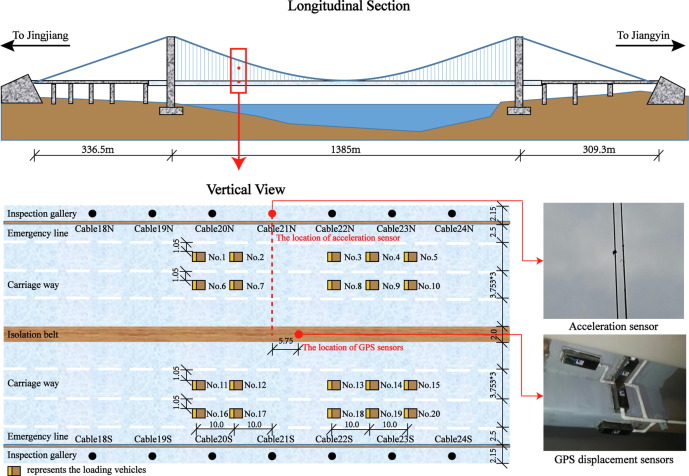Identification of instantaneous tension of bridge cables from dynamic responses: STRICT algorithm and applications
Real-time monitoring of instantaneous cable tension is essential for condition monitoring and health diagnosis of cable-supported bridges. Vibration-based identification of cable tension resting on the relation between the cable tension and the frequency of dynamic responses has been increasingly investigated in the last decade. The extant studies have realized identification of cable tension by in-situ measurement of dynamic responses, whereas monitoring of instantaneous variation of cable tension is a pending issue, not yet well resolved. To address this issue, this study proposes a new algorithm termed Synchrosqueezing short-time Fourier Transform-based Real-time Identification of Cable Tension (STRICT). The STRICT features identification of instantaneous frequencies of dynamic responses from acceleration sensors, facilitating determination of the instantaneous cable tension of bridges. The accuracy and reliability of the proposed method is demonstrated on a 3D finite element model, and its applicability is experimentally validated on the Jiangyin Yangtze River bridge. The numerical and experimental results show that the STRICT algorithm can identify instantaneous cable tension with satisfactory accuracy, providing a new path for monitoring the condition of cable-supported bridges.

Fig. 1. IFs identified by STRICT algorithm for SNRs of (a) 20 dB, (b) 10 dB, and (c) 5 dB.

Fig. 2. IFs identified using STFT under SNR conditions of (a) 20 dB, (b) 10 dB, and (c) 5 dB.

Fig. 3. IFs identified by STFT (a) with the associated zoomed-in part (b) of Case 1.

Fig. 4. Front and planform views of the experimental location.